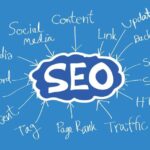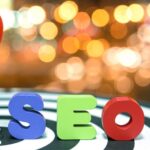
Shopify is a powerful e-commerce platform that has taken the online retail world by storm. Its ease of use, affordability, and versatility have made it the preferred choice for many businesses and individuals looking to create their online stores.
However, having a Shopify store is just the first step. To be successful, your store needs to attract traffic, engage visitors, and convert them into paying customers. This is where SEO (Search Engine Optimization) and Conversion Optimization come into play.
In this comprehensive guide, we will discuss the importance of SEO and Conversion Optimization and provide you with practical tips and strategies to help you optimize your Shopify store for success.
What is SEO and Why is it Important for Your Shopify Store?
SEO refers to the process of optimizing your website to rank higher in search engine results pages (SERPs). This is critical because the higher your website ranks in search results, the more likely it is that people will find it, visit it, and ultimately, make a purchase. The ultimate goal of SEO is to increase the visibility and credibility of your website, making it easier for potential customers to find you.
How to Optimize Your Shopify Store for SEO?
Keyword Research: Keyword research is the first and most critical step in optimizing your Shopify store for SEO. This process involves identifying the keywords and phrases that your target audience is searching for and using them to optimize your website accordingly. You can use a variety of tools, such as Google Keyword Planner or SEMrush, to help you with your research.
On-page Optimization: On-page optimization involves optimizing the content and structure of your website to make it more appealing to both search engines and users. This includes things like title tags, meta descriptions, header tags, and more. Your goal should be to create a website that is well-structured, easy to navigate, and provides valuable information to your visitors.
Content Creation: Content is king when it comes to SEO. The more high-quality, original, and relevant content you have on your website, the better your chances of ranking higher in search results. This can include blog posts, product descriptions, customer reviews, and more. The key is to create content that provides value to your target audience and helps to establish your brand as a trusted and credible source of information.
Link Building: Link building is the process of acquiring links from other websites that point to your website. These links act as votes of confidence and help to improve your website’s visibility in search results. There are many different link building strategies, including guest blogging, broken link building, and more.
What is Conversion Optimization and Why is it Important for Your Shopify Store?
Conversion Optimization refers to the process of improving the conversion rate of your website. This means that you are looking to increase the number of visitors to your website who take a desired action, such as making a purchase. Conversion optimization is important because it helps you to maximize the potential of your website, converting more visitors into customers and increasing your sales and revenue.
How to Optimize Your Shopify Store for Conversion Optimization?
User Experience: The first and most important aspect of conversion optimization is user experience (UX). A positive user experience is crucial for converting visitors into customers, and it starts from the moment they land on your website. A well-designed website with an intuitive navigation and fast-loading pages can make a significant impact on your conversion rate.
To optimize your Shopify store for UX, consider the following:
- Navigation: Make sure that your website’s navigation is clear and easy to use. Visitors should be able to find what they are looking for with minimal effort.
- Page speed: A slow-loading website can lead to high bounce rates and low conversion rates. Use tools such as Google PageSpeed Insights to test the speed of your website and make any necessary optimizations.
- Mobile responsiveness: A significant portion of online shopping takes place on mobile devices, so it’s essential to ensure that your website is mobile-friendly.
- Design: Your website design should be visually appealing and reflect the style and personality of your brand.
A/B Testing: A/B testing is the process of testing two different versions of a page to determine which one performs better. By making small changes and testing them, you can gradually optimize your website and achieve a higher conversion rate.
A/B testing can be used to test different aspects of your website, such as layout, call to action (CTA) buttons, and color scheme. For example, you could test two different versions of your product page, with version A having a plain white background and simple product images and descriptions, and version B having a visually appealing design with detailed product descriptions and images showcasing the product in use.
To perform A/B testing on your Shopify store, you can use tools such as Google Optimize or Optimizely. These tools allow you to create and test different versions of your website, track the results, and make data-driven decisions based on your findings.
Product Descriptions: Product descriptions are a crucial component of conversion optimization, as they help potential customers make informed purchasing decisions. A well-written product description should be clear, concise, and provide all the information that a customer needs to make a purchase.
To optimize your product descriptions, consider the following:
- Clarity: Write product descriptions that are easy to understand, and use clear and concise language.
- Relevance: Ensure that your product descriptions are relevant and provide valuable information to potential customers.
- Emotion: Use descriptive language that evokes emotions and helps to build a connection with the customer.
Trust Signals: Trust signals are elements on your website that help to build trust and credibility with your visitors. Examples of trust signals include customer reviews, SSL certificates, and money-back guarantees.
Incorporating trust signals into your website can have a significant impact on your conversion rate. For example, displaying customer reviews on your product pages can help to build trust with potential customers and increase their likelihood of making a purchase.
The Bottom Line
SEO and Conversion Optimization are two important factors that can help your Shopify store succeed in the online marketplace. By optimizing your store for SEO, you can increase your visibility in search results and attract more potential customers to your store. By focusing on Conversion Optimization, you can improve the user experience and increase the likelihood that visitors will take the desired action, such as making a purchase.
To achieve the best results, it is essential to take a holistic approach to optimization and continually monitor and adjust your website to meet the evolving needs of your target audience. Whether you choose to handle optimization on your own or opt for professional Shopify SEO services, the key to success is to stay focused on your goals and be willing to make the necessary changes to achieve them.
With the right combination of SEO and Conversion Optimization, you can create a Shopify store that not only attracts traffic but also converts that traffic into paying customers. So, keep working hard and stay focused on your goals, and you’ll be well on your way to creating a successful Shopify store.







